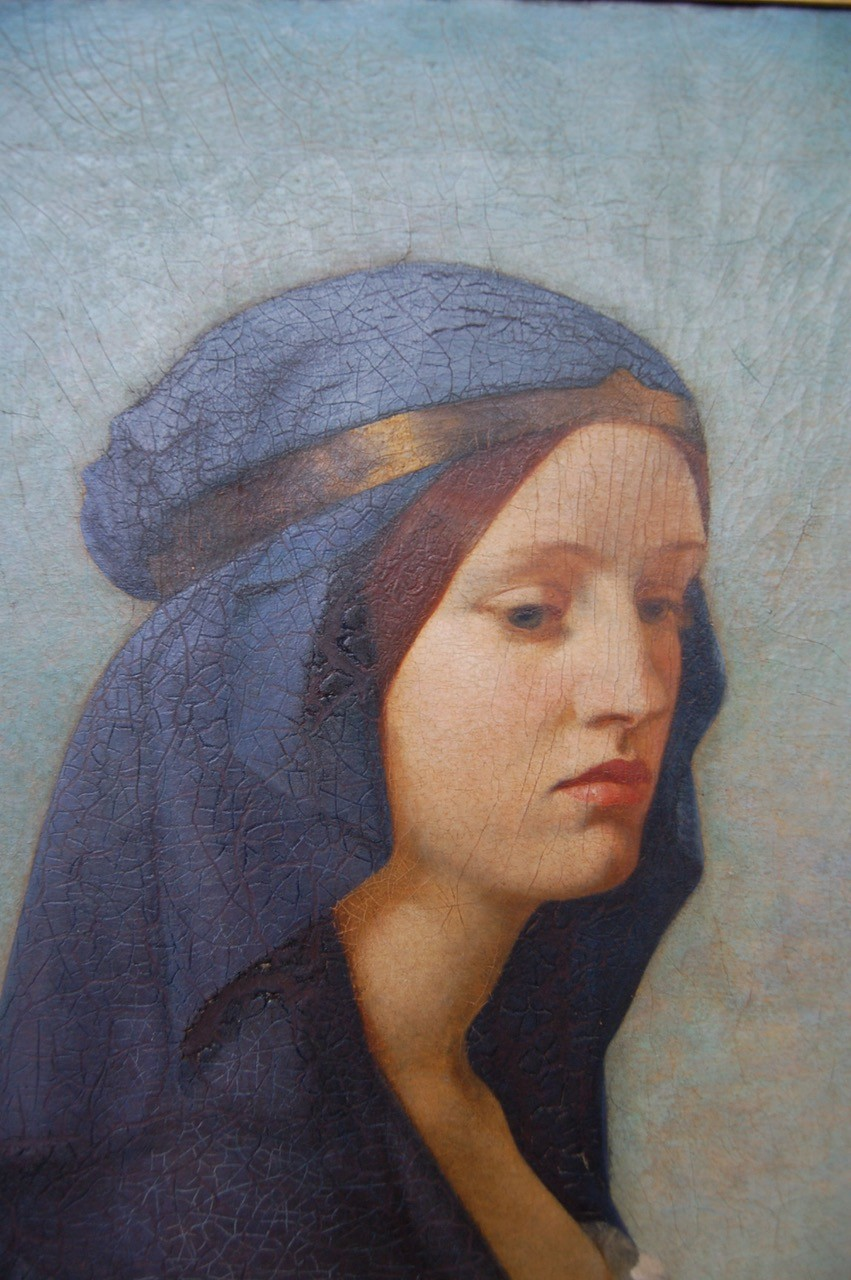
Joanna Mary Boyce: colourist and innovator
Colour Materiality
1850
Joanna Mary Boyce (1831-61), sister of the watercolour artist and later oil painter George Price Boyce, and wife of the portrait painter Henry Tamworth Wells, was very highly regarded as both artist and reviewer, particularly by the critic John Ruskin. She was an integral part of the London artistic scene and her brother shared Dante Gabriel Rossetti’s studio: she saw iconic paintings in progress and well as reviewing their first public display. Her life story as recorded in the diaries and collected correspondence of the trio reflects both the obstacles to a professional career faced by a middle-class woman, and her determination to overcome them by organising her own training in Paris where she could attend life classes forbidden to women in London. Indeed, she deferred her marriage out of concern for the damage it might do to her career despite Well’s supportive attitude: it is deeply ironic that she would die aged thirty following the birth of her third child. Many of her best works were destroyed by fire during the Second World War.
The trio were active when the traditional distinction between high art (in oil, painted often at vast scale to dominate exhibition spaces) and the use of the ‘inferior’ watercolour medium (traditionally used for landscapes, geographical and botanical documentation) became increasingly blurred. By the 1860s it would take far more than a cursory glance to determine whether a painting was in fact in oil or watercolour (which Ruskin noted) or even in what would today be called mixed media. The choice did not restrict the tonality or key of the work either. It was an excellent century to be a colourist as Joanna was: the early and rapid pace of industrial invention would continue unabated to its end, while all the more traditional artists’ colours continued to be available too. The price of materials fell rather than rose. New industrial processes and greater production of artists’ materials in the USA meant that zinc white pigment offered painters in oil a bluer white, the first new white in centuries.
Joanna exhibited mainly in oil, and was more innovative in terms of materials than her brother or her husband. She repeatedly repainted passages until they met her exacting aims, always paying attention to the natural lighting where she worked. She sought her own juste milieu, a style with which she felt comfortable, in keeping with the brilliant colours and fine detail so characteristic of the Pre-Raphaelite Brotherhood. Joanna used a white ground on her canvases, as they had begun to do, hers often made from zinc white. This, prone to cracking after a few years or decades, has not promoted the survival of Joanna’s works, and nor did the ‘megilp’ additives to oil tube paint Joanna noted she used. Elgiva 1854, to judge by its extensive cracking, also had a zinc white ground.
For La Veneziana, Head of a Mulatto Woman and The Heather Gatherer, none of which survive, Joanna noted that she used: madder crimson, deep purplish crimson lake, madder brown, vermilion, ‘lemon yellow’ which is likely pale chrome yellow, Indian red, yellow ochre, raw and burnt sienna, raw umber, cobalt blue, Antwerp blue, and an unspecified black pigment, often as colour mixtures. Her bright ‘Titian green’ was achieved by applying a mixture of Antwerp blue and yellow lake over a brown/yellow glaze of raw sienna. The colours she used for the portrait of her baby, Sidney Wells 1859, were analysed and found to be: madder, vermilion, Mars red, cobalt blue and bone black, mixed with lead white and applied to a zinc white ground.
Bibliography
-
Bradbury, Sue (ed.), The Boyce Papers: The Letters and Diaries of Joanna Boyce, Henry Wells and George Price Boyce, Woodbridge, The Boydell Press, 2019.
-
Herrington, Katie J. T., ‘Joanna Mary Boyce: Beyond Pre-Raphaelitism’, in Katie J. T. Herrington (ed.), Victorian Artists and their World 1844–1861: As Reflected in the Papers of Joanna and George Boyce and Henry Wells, Woodbridge, The Boydell Press, 2024, pp.169–206.
-
Mann, Fiona, ‘Navigating the “many botherations of a picture”: the techniques and materials of George Price Boyce, Dante Gabriel Rossetti and Edward Burne-Jones’, in Christiana Payne, Pre-Raphaelites: Drawings and Watercolours, Oxford, Ashmolean Museum, 2021, pp.29–49.
-
Nunn, Pamela Gerrish, ‘Joanna Mary Boyce: In Her Own Time’, in Katie J. T. Herrington (ed.), Victorian Artists and their World 1844–1861: As Reflected in the Papers of Joanna and George Boyce and Henry Wells, Woodbridge, The Boydell Press, 2024, pp.145–168.
-
Townsend, Joyce H., Jacqueline Ridge and Stephen Hackney, Pre-Raphaelite Painting Techniques, 1848–56, London, 2004.
-
Townsend, Joyce H., ‘Paint and painting: the virtues and trials of practices exchanged by word-of-mouth’, in Katie J. T. Herrington (ed.), Victorian Artists and their World 1844–1861: As reflected in the papers of Joanna and George Boyce and Henry Wells, Woodbridge, The Boydell Press, 2024, pp.123–144.